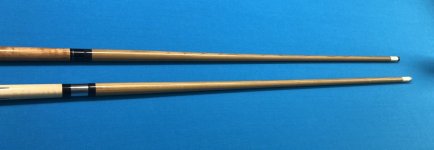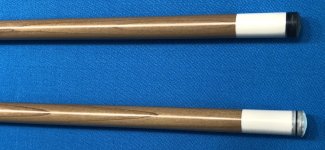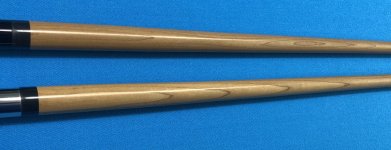A shaft maker can’t guarantee the final weight of the Kielwood shaft, or or at least that’s what a couple of different cue makers told me. Obviously, with a piloted shaft, the added weight of the receiver is already known but the weight of the wood changes. During the torrification process, it was explained to me the wood has its moisture and sugar content extracted by kiln heat under vacuum pressure. Afterwood, moisture has to be reintroduced to the wood with a moisture goal of approx. 4%. The final weight of the shaft isn’t known until after it’s been torrified. There’s also the shaft diameter & taper length that affects the shaft weight. I think Richard Hsu produces the most handsome shafts and pretty much delivers what you want. He may make the best Kielwood shafts around bar none.
I was tempted to get one but the price is steep. Then I tried two other makers that were half the price of a Tsunami shaft. One I own and another that my friend has that fits my cues. Again, I think Richard Hsu makes the nicest Kielwood shafts but I have to ask myself, for twice the price, how much better, if any, could they play than the one I own or my friend. I think both of these other shafts already exceeded my expectations and play terrific……for half the price. Maybe producing a top quality Kielwood shaft doesn’t have to become the equivalent price of a carbon shaft. Well, just food for thought, or perhaps some discussion. I think Kielwood is the best version of a wood shaft.









